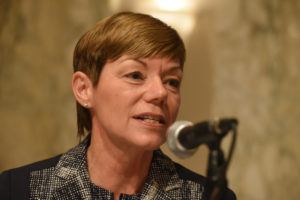“The goal is to become HBO faster than HBO can become us,” the chief content officer of Netflix said four years ago.
In the insurance world, InsureTech Connect Conference Founder Caribou Honig thinks traditional insurers and Insurtech startups are facing a similar challenge. To him, it’s about speed.
The question is whether the innovation executives (HBO) from within existing insurance companies that have been around for 30 or 300 years can reorient their customer-facing technology in time or whether the startups (Netflix) trying to become the next generation of insurance companies can build the strengths and capabilities that the incumbents already have.
In the long run, the winners will have to assimilate both. They will have to have both the strengths and capabilities of HBOs and the Netflixes of the world, Honig told conference attendees.
Oliver Wyman’s Prashanth Gangu agrees that the pace of change is an issue. To be relevant in the future carriers will need to adapt, create new insurance products and new capabilities for customers who will want them to manage their entire risk environment. “Incremental changes are not enough for incumbents,” he said. The configuration of one-on-one connections of insurer to customer may not fit the purpose going forward. Instead carriers will need a service platform that maximizes the value of the entire ecosystem and not just one-to-one connections.
 That’s a tall order for carriers. But for their part, InsurTechs also face a steep climb. They will need to “go beyond the low-hanging fruit,” Gangu says.
That’s a tall order for carriers. But for their part, InsurTechs also face a steep climb. They will need to “go beyond the low-hanging fruit,” Gangu says.
Eric Boyum, Aon Risk Solutions, said a lot of what InsurTechs are doing is not all that exciting but is “simply doing what, frankly, the industry really ought to be able to do.” The industry should forget the hype and embrace the cutting away of “low-hanging fruit,” he suggested.
Billion Dollar Challenge
One incumbent poised to take on the challenges of the next decade is CSAA Insurance Group, a AAA insurer. For the past six years, the home and auto carrier has been imagining a future of autonomous cars and mobility-on-demand, as well as a future where purchasing insurance services is as easy as buying products on Amazon.

CSAA has set an organizational goal of replacing lost revenues and relationships, according to CEO Downey.
Paula Downey
Photo by Don Pollard taken at 2015 Property/Casualty Joint Industry Forum
The company sees it as “when, not if” autonomous vehicles and on-demand driving will result in a decline of as much as $1 billion in revenues for the company over the next decade. CSAA has set an organizational goal of replacing those “lost revenues and relationships.”
The strategy is to stay focused on customers’ changing needs and that focus suggests there may be opportunities in the blurring of lines between personal and commercial lines insurance, according to Downey.
(Editor’s Note: Separately, Marie Andel, chief people and culture officer at CSAA Insurance Group, a AAA Insurer, explained how the carrier is encouraging and empowering employees to drive innovation. Training, change champion networks and executive buy-in are key factors, she wrote in an article for Carrier Management titled, “Change Champions: How to Build Innovation Into an Insurance Company Culture.”)





















 What to Expect in 2026: U.S. P/C Results More Like 2024
What to Expect in 2026: U.S. P/C Results More Like 2024  Good Times for U.S. P/C Insurers May Not Last; Auto Challenges Ahead
Good Times for U.S. P/C Insurers May Not Last; Auto Challenges Ahead  Carrier Management’s 2025 Top Features (Reader’s Picks Unlocked)
Carrier Management’s 2025 Top Features (Reader’s Picks Unlocked)  Why the Middle Market Matters and How Insurers Can Capture It
Why the Middle Market Matters and How Insurers Can Capture It 








